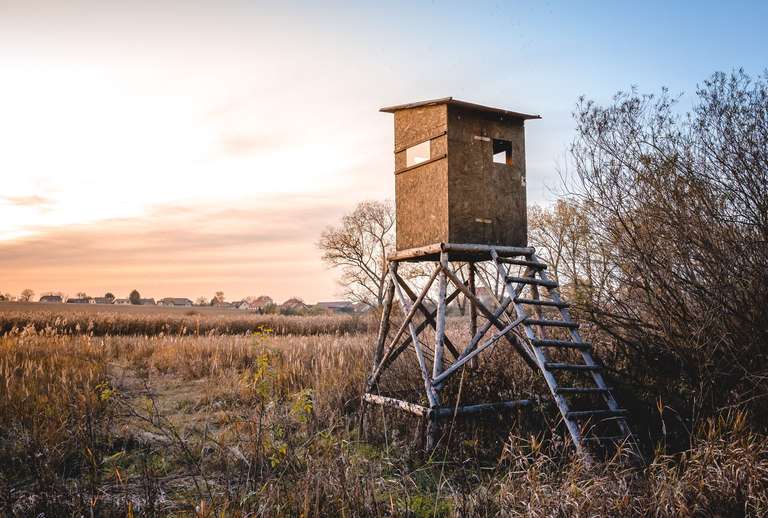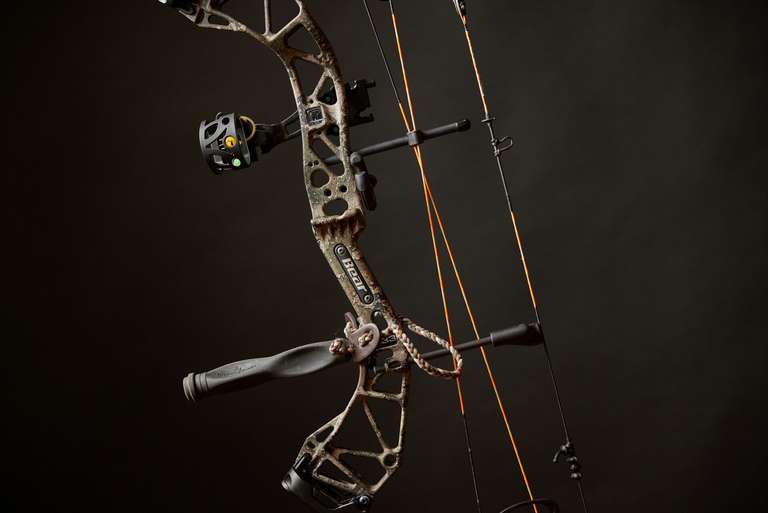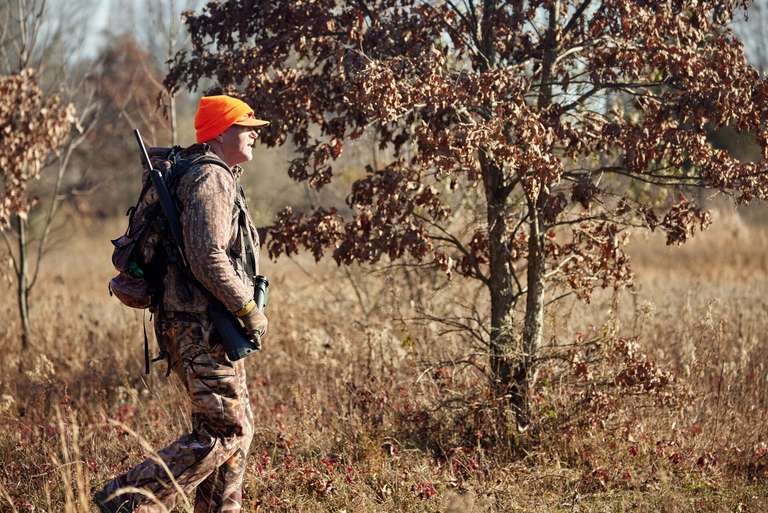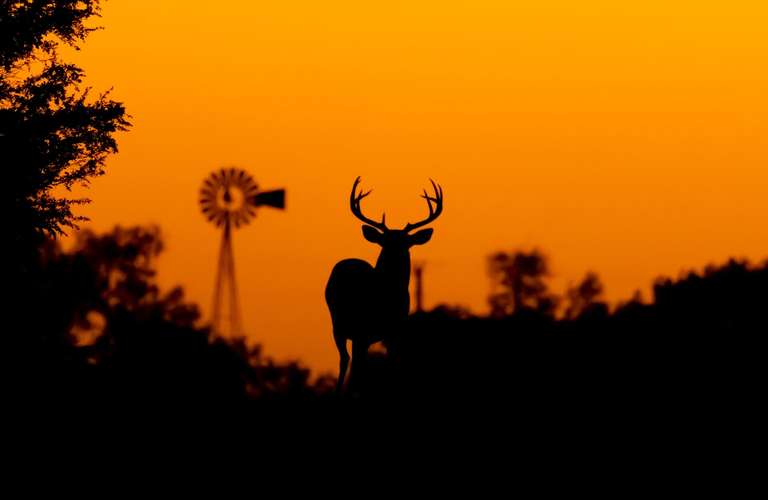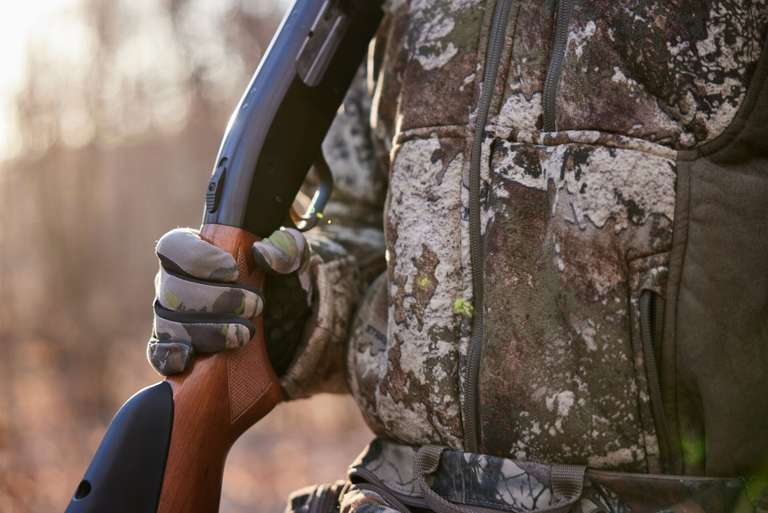Tree Stand Safety: How to Avoid a Fall

While hunting from a tree stand is effective in the whitetail woods, that effectiveness can also come with a hefty price. Each year, around 6,400 hunters are injured from tree stand falls. These accidents, which are often preventable, lead to everything from bruised egos to broken bones, spinal injuries, and fatalities.
Understanding and consistently practicing the fundamentals of tree stand safety will ensure you have a successful hunt and return home safely.
Here are a few things to help you avoid a fall when hunting from a tree.
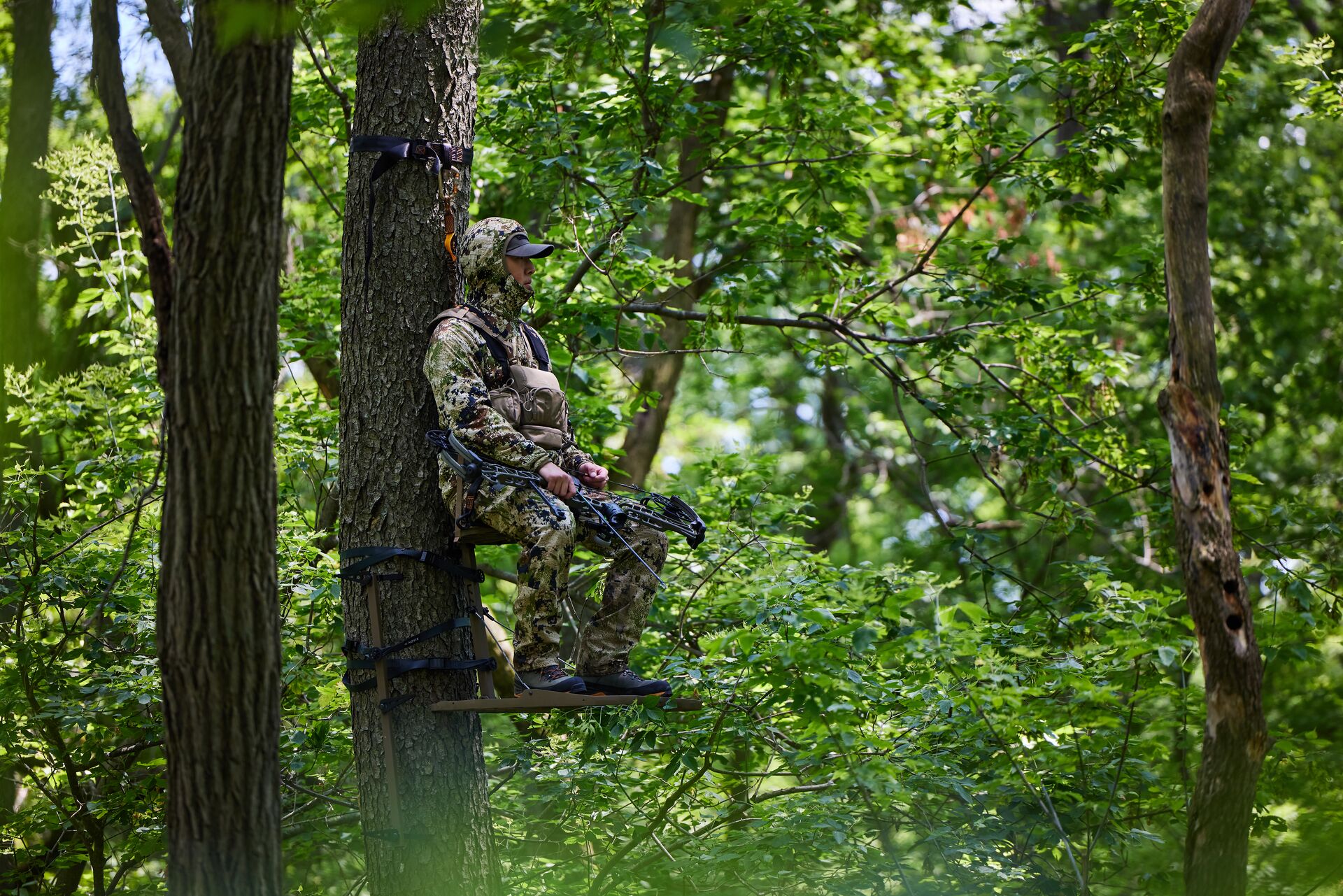
Why Tree Stand Safety Is Important
Unfortunately, gravity does not discriminate between novice and veteran hunters. That natural and constant force is always waiting to take advantage of your equipment failures, lapses in judgment, fatigue, and sudden weather changes.
The good news is that most tree stand falls are preventable.
Most accidents occur when a hunter executes routine movements, such as entering or exiting the stand, shifting position, or becoming complacent during an extended sit. Properly managing your equipment, correctly installing it, using safety gear correctly, and a healthy dose of common sense can significantly reduce your risks of becoming another hunting accident statistic.
Choosing the Right Tree Stand
There are three basic types of hunting tree stands: ladder stands, climbing stands, and hang-on stands. Each type has its pros and cons, depending on your hunting style, terrain, and comfort preferences.
- Ladder stands are the most common stands in the woods. They provide the most stable platform and the easiest access, making them ideal for novice hunters or those who are uncomfortable with heights.
- Climbing stands offer mobility for hunters who need to quickly and frequently change locations during a hunt. This type of stand requires a deeper skillset to identify compatible trees and use them properly while ascending, descending, and anchoring.
- Hang-on stands require the longest set-up time and additional equipment, such as climbing sticks or screw-in steps. However, hunters favor these stands for their relative stability and ability to access difficult locations.
Regardless of which type of tree stand you use, always inspect your equipment for worn straps, loose parts, or rusted bolts that could fail.
When picking a tree for your stand, your best bet will be straight hardwoods with no visible structural damage or signs of disease. The tree’s diameter where the stand will be anchored — not the diameter at the ground — should match your stand’s design specifications.
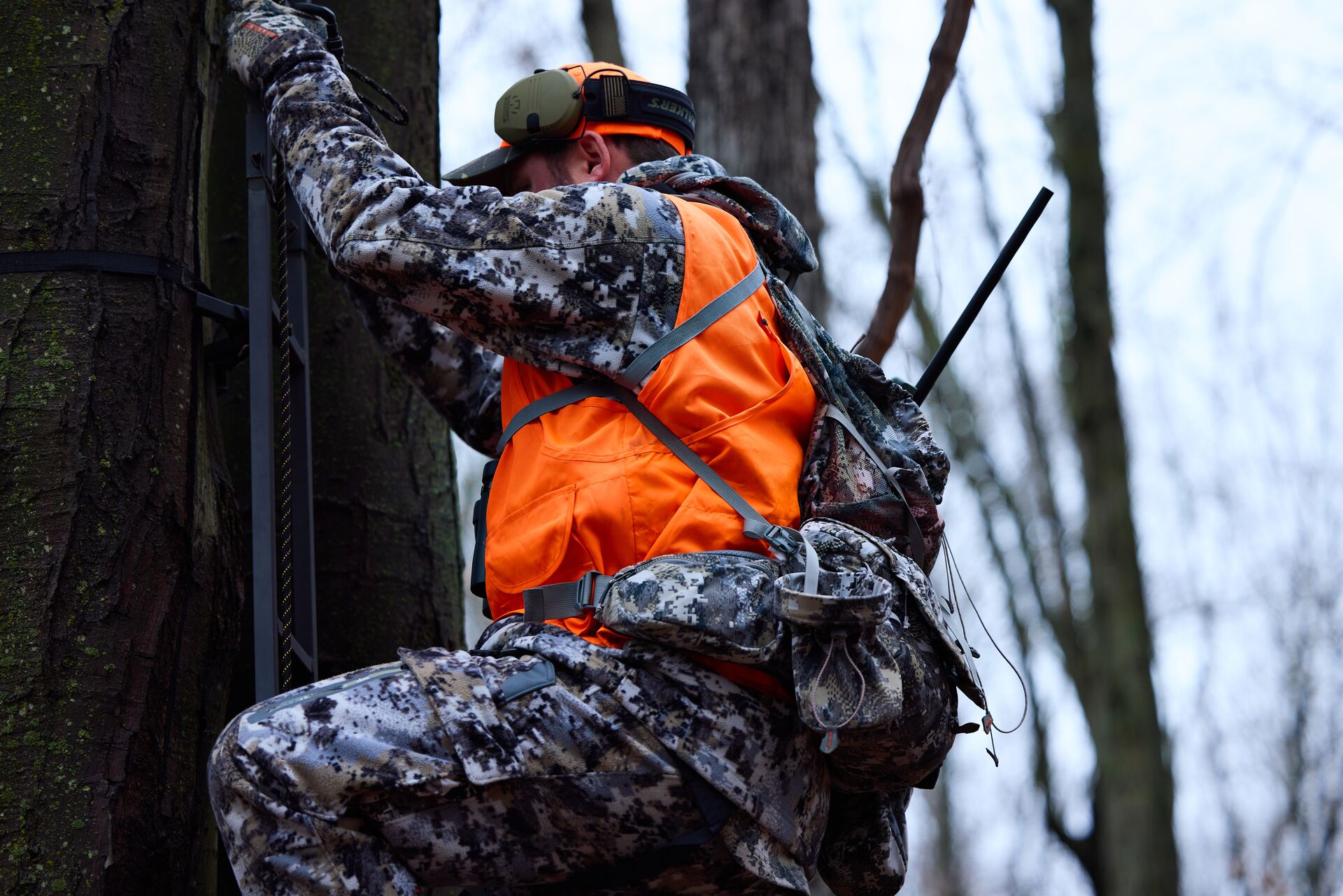
How to Use a Climbing Tree Stand Safely
A climbing tree stand offers excellent mobility, but that convenience comes with a responsibility price tag.
Before using your stand, read the manufacturer's instruction manual on how to use a climbing tree stand. I would even suggest bringing the manual to the field as a helpful reference when learning how to use the equipment.
Select Your Tree
Your first step is selecting the correct tree.
Look for hardwood trees with the appropriate diameter and bark textures. Avoid excessive tapering in the trunk and smooth bark, as these will cause the stand to tend to slip when you move.
Connect Your Harness Before Climbing
Once you’re ready to climb, ensure your full-body safety harness is connected to the tree with a lineman’s belt or similar device that allows hands-free movement.
Always maintain at least three points of contact when ascending and descending. Move the platform and seat sections in coordination with your hands and feet.
Bring Equipment Last
Don’t carry equipment when you’re moving up and down the tree. Always use a haul line to raise your gear to your position or lower it to the ground.
Connect the haul line to the stand, not your body, so that a snag won’t pull you off balance.
Practice, Practice, Practice
As always, practice makes perfect. Make the time to practice setting up and taking down our stand at ground level.
Once you’re confident, practice climbing and using the stand at low heights until the process becomes automatic and you have complete trust in your safety.
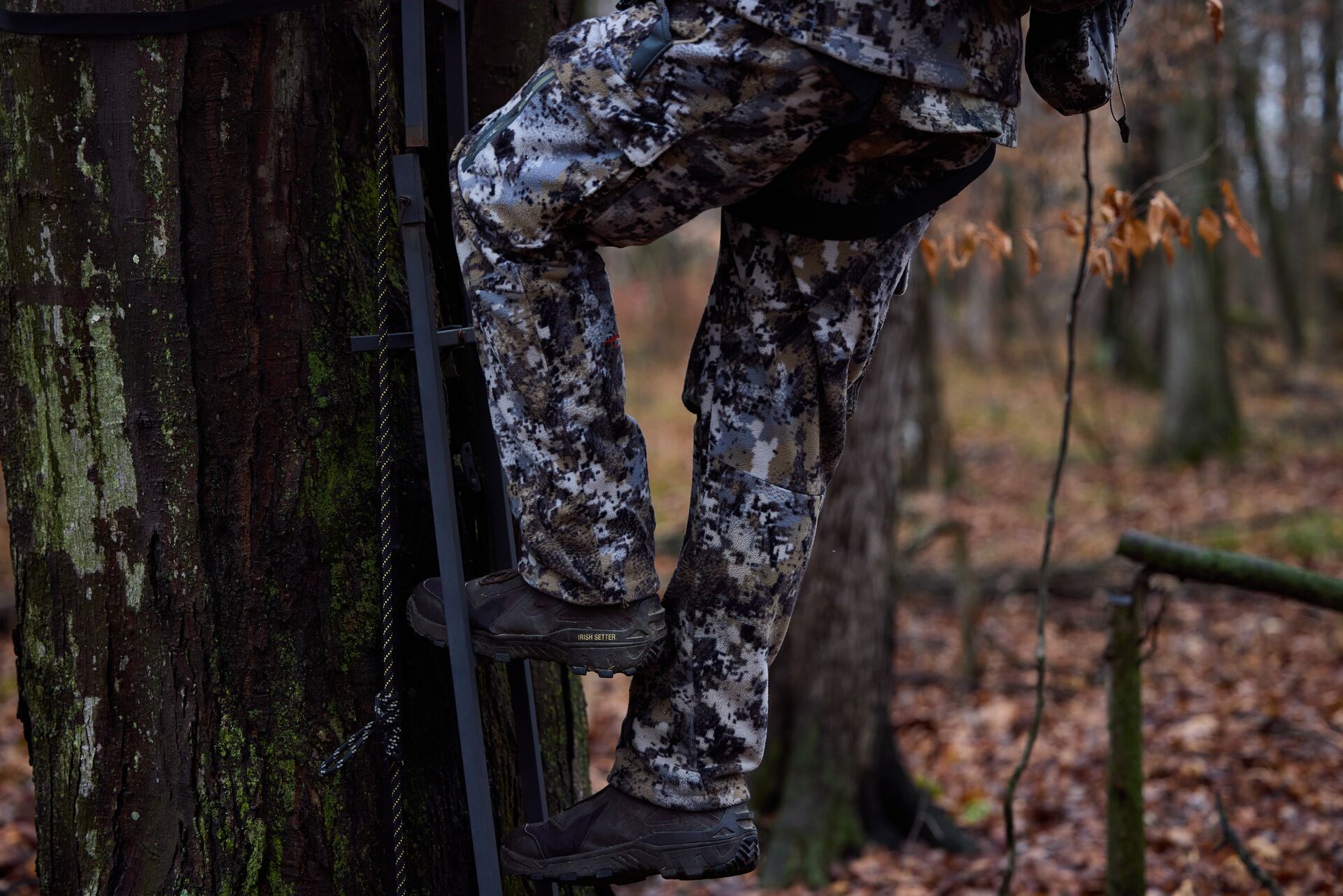
What to Wear to Improve Tree Stand Safety
So, what should you wear when using a tree stand? The right gear is crucial to your comfort and safety.
Aside from dressing for the weather and using the appropriate camouflage, wearing specific safety gear is non-negotiable in the tree stand.
Always wear a certified full-body fall-arrest system (FAS) to tether yourself to the tree. If you fall, the harness will distribute the force across your body. The FAS will keep you from falling far enough to mitigate major injuries.
In addition to FAS, wear sturdy boots with good traction and gloves that give you increased grip in wet and cold conditions.
Choose clothing that reduces noise in the stand but doesn’t snag on equipment and branches. Dress in layers to minimize the need for unnecessary clothing changes during your sit.
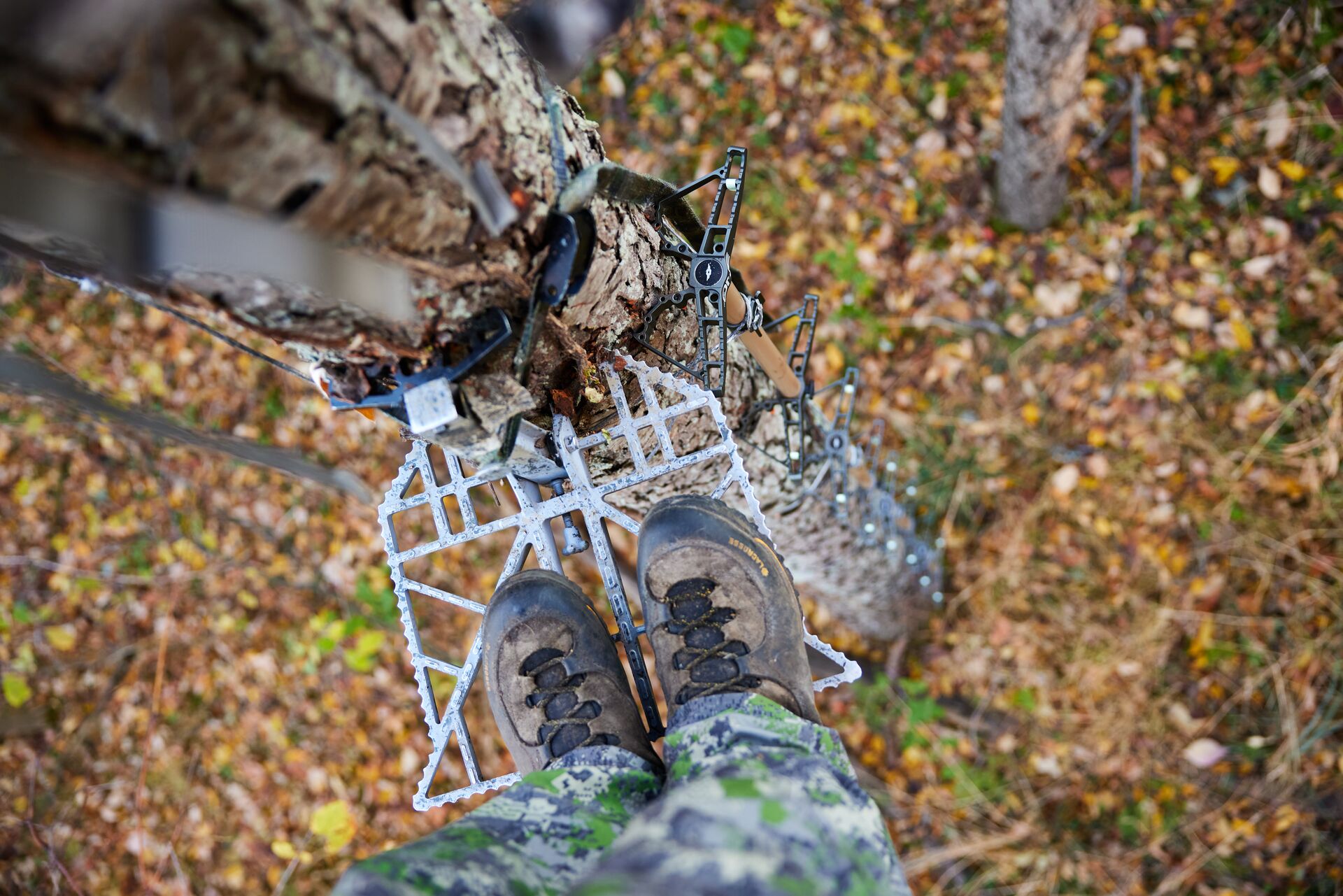
Essential Safety Tips for Hunting From a Tree Stand
Aside from basic safety practices, there are four fundamental tree stand safety tips to apply for every climb.
These are:
- Use a Lifeline System: Use a system that keeps you connected to the tree, from ground to stand and back. Modern lifeline systems use a prusik knot that slides up and down the rope but automatically locks if you fall.
- Check the Forecast: Precipitation, ice, and wind can dramatically increase your risk of slipping. If you’re uncomfortable climbing in the current weather, postpone your hunt or work from the ground.
- Share Your Hunting Plans: Let someone not hunting with you know your plans for the hunt. Share details about where your truck will be parked, the tree stand location, and what time you expect to arrive and return.
- Practice Before the Season Begins: Set up your tree stand and practice climbing before the season begins. Get comfortable using an FAS and practice recovery techniques so you know how to get to the ground or back in your stand if you fall.
Additionally, make sure to carry a fully charged phone or emergency communications device.
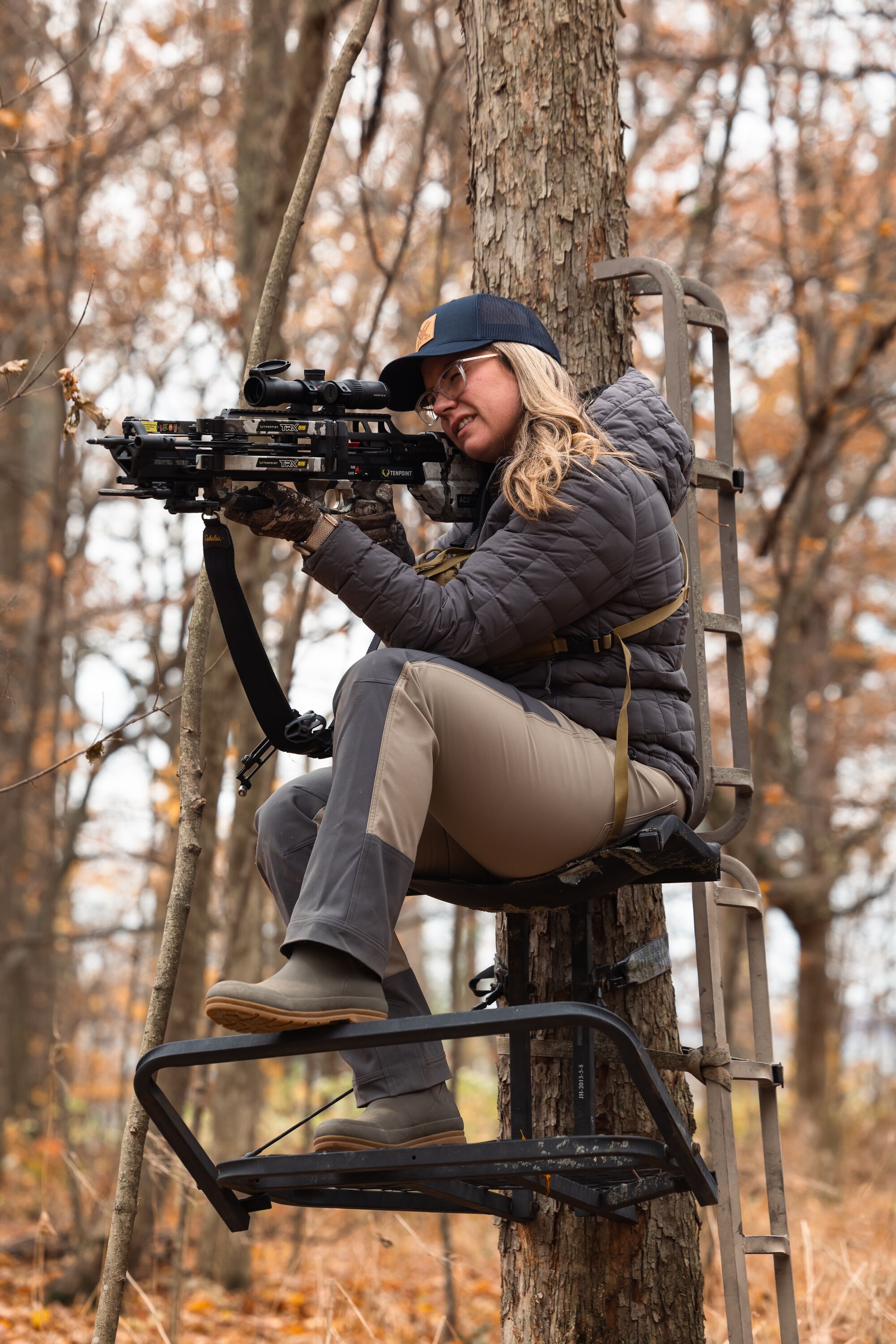
ilearntohunt Helps You Put Safety First in a Tree (or On the Ground)
Tree stands can offer deer hunters outstanding advantages and boost their chances of successfully harvesting a whitetail. However, these benefits can only add value to your hunt if you understand the significant responsibilities of elevated hunting.
Using only quality equipment, understanding its uses and limitations, and consistently following standard safety protocols can let you enjoy the view from above while reducing the risk of injury.
Before taking your tree stand to the woods, make sure you’re educated on all aspects of hunting safety and ethics by completing an online hunter education course from ilearntohunt! Our course is tailored to your state’s requirements and covers critical knowledge on safety fundamentals, field skills, and even tree stand safety protocols.
After all, the most successful hunting career is a long one full of memorable experiences and spans decades without serious injury.
As you plan your hunts for the fall, include hunter education in those plans!
Take the ilearntohunt course for your state and stay safe in the field.

